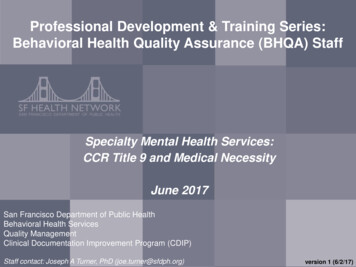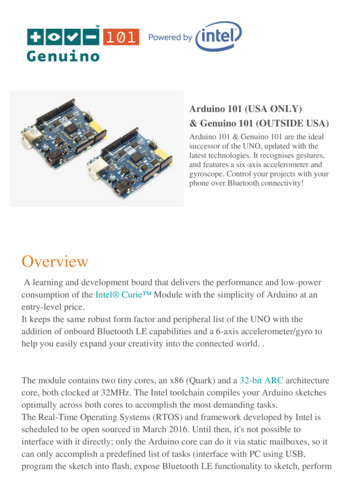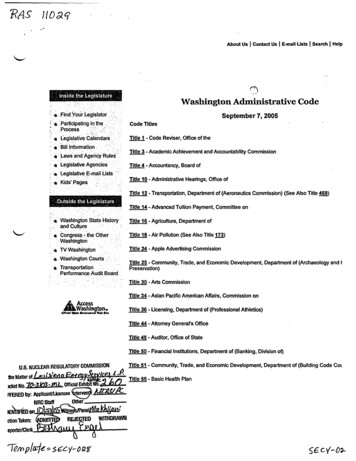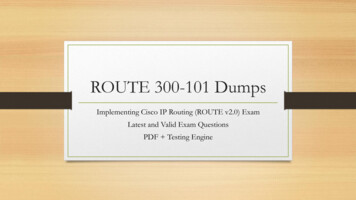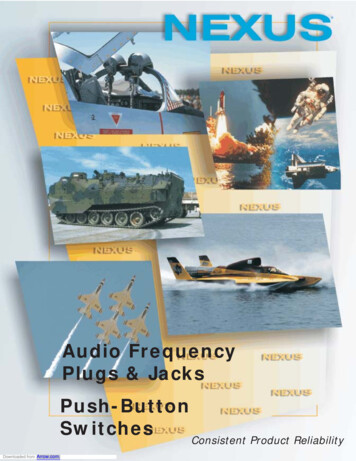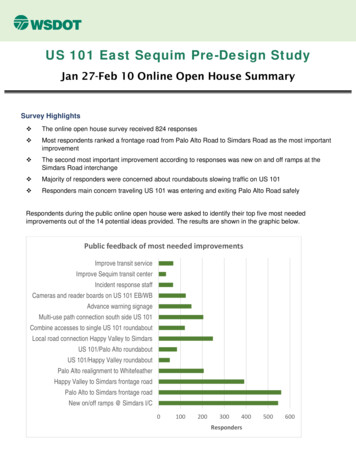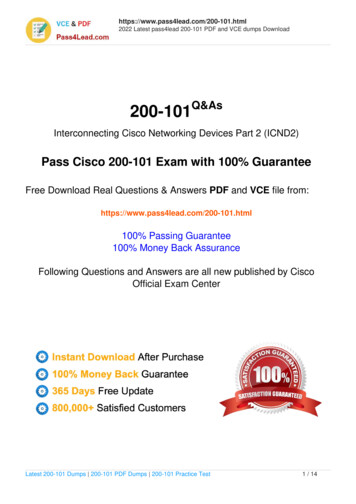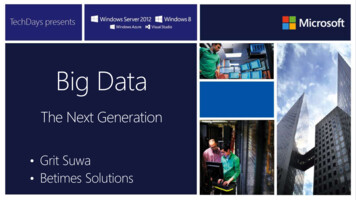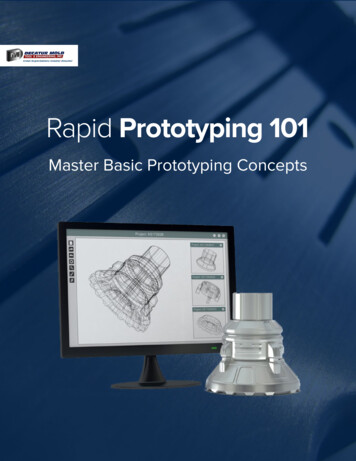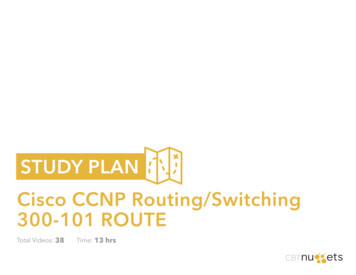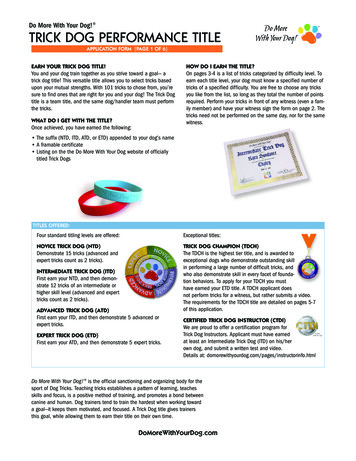![[A] 101.1 Title. North Carolina Plumbing Code As Adopted By The . - NC](/img/18/42948-plumbing-code-technical-changes.jpg)
Transcription
REQUEST FOR TECHNICAL CHANGEAGENCY:NC Building Code CouncilRULE CITATION:NC Plumbing CodeDEADLINE FOR RECEIPT: Wednesday, August 9, 2017NOTE: This request when viewed on computer extends several pages. Please be sure you havereached the end of the document.The Rules Review Commission staff has completed its review of this rule prior to theCommission's next meeting. The Commission has not yet reviewed this rule and therefore therehas not been a determination as to whether the rule will be approved. You may call this office toinquire concerning the staff recommendation.In reviewing these rules, the staff determined that the following technical changes need to bemade:I note that “code” is not capitalized throughout this Code. So, I take it that it should remainlowercase everywhere is used as such?It will be lowercase unless specifically required otherwise.So that I’m clear – this will be the 2018 Plumbing Code? Or is it the 2019 Code? I note that page2 of the packet states this is the 2012 NC Plumbing Code and page 17 states it was adopted in2010 to be effective in 2011.[A] 101.1 Title. These regulations shall be known as the North Carolina Plumbing Code asadopted by the North Carolina Building Code Council on June 13, 2017, to be effective January1, 2019. References to the International Codes shall mean the North Carolina Codes. The NorthCarolina amendments to the International Codes are underlined.Also, to be clear – the Council did not adopt the International Private Sewage Disposal Code,correct?Correct.Please retype the rule accordingly and resubmit it to our office at 1711 New Hope Church Road,Raleigh, North CarolinaBarry Gupton, PEChief Code ConsultantAmanda J. ReederCommission CounselDate submitted to agency: July 26, 20171
REQUEST FOR TECHNICAL CHANGEAGENCY:NC Building Code CouncilRULE CITATION:NC Plumbing Code Acknowledgements and PrefaceDEADLINE FOR RECEIPT: Wednesday, August 9, 2017The Rules Review Commission staff has completed its review of this rule prior to theCommission's next meeting. The Commission has not yet reviewed this rule and therefore therehas not been a determination as to whether the rule will be approved. You may call this office toinquire concerning the staff recommendation.In reviewing these rules, the staff determined that the following technical changes need to bemade:On Page 4 of the packet, should the Commissioner of Insurance be updated?All of the “upfront” pages will be editorially updated in all of the Code volumes, includingStaff and BCC members.On Page 14 of the packet, aren’t you deleting Chapter 14? Should that be reflected here?Are you keeping Pages 15-16 of the packet? If so, why?The “upfront” pages are not part of the adopted Code. The rule begins with Chapter 1.Please retype the rule accordingly and resubmit it to our office at 1711 New Hope Church Road,Raleigh, North CarolinaBarry Gupton, PEChief Code ConsultantAmanda J. ReederCommission CounselDate submitted to agency: July 26, 20172
REQUEST FOR TECHNICAL CHANGEAGENCY:NC Building Code CouncilRULE CITATION:NC Plumbing Code, 103, 104, 106, 107,108, 109DEADLINE FOR RECEIPT: Wednesday, August 9, 2017The Rules Review Commission staff has completed its review of this rule prior to theCommission's next meeting. The Commission has not yet reviewed this rule and therefore therehas not been a determination as to whether the rule will be approved. You may call this office toinquire concerning the staff recommendation.In reviewing these rules, the staff determined that the following technical changes need to bemade:What are the Administrative Code and Policies you are referring to here? You need to specifythis or the rules are unclear as written. If the intent is to state that that governing law and ruleswill apply, do you intend to state that at all or just not have these Sections within the code?The North Carolina Administrative Code and Policies is a volume of the NC State BuildingCodes.Please note that Section 105.4.6 requires the alternative engineered design to meet therequirement of Section 107, and there are no requirements here.105.4.6 Inspection and testing. The alternative engineered design shall be tested andinspected in accordance with the requirements of the North Carolina AdministrativeCode and Policies.Please retype the rule accordingly and resubmit it to our office at 1711 New Hope Church Road,Raleigh, North CarolinaBarry Gupton, PEChief Code ConsultantAmanda J. ReederCommission CounselDate submitted to agency: July 26, 20173
REQUEST FOR TECHNICAL CHANGEAGENCY:NC Building Code CouncilRULE CITATION:NC Plumbing Code, Chapter 1DEADLINE FOR RECEIPT: Wednesday, August 9, 2017The Rules Review Commission staff has completed its review of this rule prior to theCommission's next meeting. The Commission has not yet reviewed this rule and therefore therehas not been a determination as to whether the rule will be approved. You may call this office toinquire concerning the staff recommendation.In reviewing these rules, the staff determined that the following technical changes need to bemade:102.3: Since you are adding “All” to start the sentence, “devices” should be lowercase.[A] 102.3 Maintenance.Plumbing systems, materials and appurtenances, both existing and new, and parts thereof, shallbe maintained in proper operating condition in accordance with the original design in a safe andsanitary condition. All devices or safeguards required by this code shall be maintained incompliance with the edition of the code under which they were installed.The owner or the owner’s authorized agent shall be responsible for maintenance ofplumbing systems. To determine compliance with this provision, the code official shall have theauthority to require any plumbing system to be re-inspected.102.8: In the Exception, why is “listing” italicized? I don’t see the term italicized. And what doesit mean?[A] 102.8 Referenced codes and standards.The codes and standards referenced in this code shall be those that are listed in Chapter 15and such codes and standards shall be considered as part of the requirements of this code tothe prescribed extent of each such reference and as further regulated in Sections 102.8.1 and102.8.2.Amanda J. ReederCommission CounselDate submitted to agency: July 26, 20174
[R] Exception: Where enforcement of a code provision would violate the conditions of thelisting of the equipment or appliance, the conditions of the listing and manufacturer’sinstructions shall apply.Please retype the rule accordingly and resubmit it to our office at 1711 New Hope Church Road,Raleigh, North CarolinaBarry Gupton, PEChief Code ConsultantAmanda J. ReederCommission CounselDate submitted to agency: July 26, 20175
REQUEST FOR TECHNICAL CHANGEAGENCY:NC Building Code CouncilRULE CITATION:NC Plumbing Code, Chapter 2DEADLINE FOR RECEIPT: Wednesday, August 9, 2017The Rules Review Commission staff has completed its review of this rule prior to theCommission's next meeting. The Commission has not yet reviewed this rule and therefore therehas not been a determination as to whether the rule will be approved. You may call this office toinquire concerning the staff recommendation.In reviewing these rules, the staff determined that the following technical changes need to bemade:202: Given your deletions in the preface (see Page 7 of the packet), shouldn’t all terms in brackets(like [M] before “Access”) be deleted? And where it is used, if you need to retain it, what does[R] mean?The “upfront” page are for informational purposes. The ICC explanation of the “letterdesignations” will be retained. They “letter designations” are used to track the ICC codedevelopment process.When you publish, please sure all terms are in alphabetical order (see Page 36 of the packet – itshould be “Alteration” “Alternate On-Site Non-Potable Water” and then “Alternative EngineeredDesign”)Acknowledged.In the definition of “approved” you need to underline the NC addition of “for compliance”[A] APPROVED. Acceptable to the code official or other authority having jurisdiction forcompliance with the provisions of the applicable code or referenced standard.In the definition of “Branch, Fixture” which “Fixture Branch” definition should be referred to –drainage or water supply? Or will that be dependent upon what the user is looking for?This is simply a cross-reference. It will be dependent upon what the user is looking.The definition of “Cistern” does not meet the definition in G.S. 143-138(b12), which states:(b12) Cisterns. - The Code may include rules pertaining to the construction or renovation ofresidential or commercial buildings and structures that permit the use of cisterns to provide waterfor flushing toilets and for outdoor irrigation. No State, county, or local building code or regulationshall prohibit the use of cisterns to provide water for flushing toilets and for outdoor irrigation. Asused in this subsection, "cistern" means a storage tank that is watertight; has smooth interior surfacesAmanda J. ReederCommission CounselDate submitted to agency: July 26, 20176
and enclosed lids; is fabricated from nonreactive materials such as reinforced concrete, galvanizedsteel, or plastic; is designed to collect rainfall from a catchment area; may be installed indoors oroutdoors; and is located underground, at ground level, or on elevated stands.Is this because this code does not include such rules?Yes. “Cistern” was referenced in 602 in a limited application, but deleted.In “Drain-Back System” what are these prescribed circumstances? Does your regulated publicknow?Yes. The system designer/manufacturer would prescribe the drain-back conditions.In “Jurisdiction” what do you mean by “due legislative authority”? Do you mean 143-138(e) inadoption of local codes that are not this code? Or are you trying to capture this code andenforcement by local officials pursuant to 143-139?143-139. The Code is adopted by the BCC for statewide enforcement. The jurisdictionmay also adopt it for civil penalties.In “Kitchen” why are you not beginning the sentence “An area used.” to be consistent with therest of this Section?This is the definition found in the Residential Code. Retain for consistency.In “Laundry Tray” begin the sentence with a capitalized letter.LAUNDRY TRAY. A fixed tub with running water and drainpipe for washing clothes and otherhousehold linens, also called set tub.In “Manifold Water Distribution Systems” what is “close proximity”? Does your regulated publicknow?Yes. Adjacent, adjoining, contiguous. 201.4 Terms not defined.In “Non-Potable Water” the term is not hyphenated in the International Plumbing Code (IBC). Willthis create an issue in using this code?No. The final IPC publication will delete the hyphen throughout.On Page 48 of the packet, delete the first definition of “reclaimed water”Deleted the duplicate definition.In “Sump pump” what is “usually”? And consider stating “Select the pump for the specific headand volume.”Most of the time, typically.Amanda J. ReederCommission CounselDate submitted to agency: July 26, 20177
In “Water Service Pipe” please either begin the sentence with an article, such as “the” or “a” ormake the term “water service pipe” plural.Water service pipe. The pipe from the water main or other source of potable water supply,or from the meter when the meter is at the public right of way, to the water distributionsystem of the building served. The water service pipe shall terminate 5 feet (1524 mm)outside the foundation wall.In “Weighted Average Lead Content” on the fifth line, will they be determining the weightedpercentage of lead of the wetted component, or will this be the lead in the component regardlessof whether it’s wetted? I asked because the next sentence refers to the “weighted percentage of. each wetted component.” For consistency, should all references be to the wetted component?No. They are different terms used by the manufacturer to mathematically determine leadcontent.So that I am clear – are you deleting “Well” because of the exemption of private drinking waterwells from the code, as set forth in G.S. 143-138(b17)?Yes. There are other agencies that regulate water supplies.In “Yard Hydrant” should this read “A freeze proof. that is an.”? If not, then it looks like you aredefining “freeze proof yard hydrant” rather than “Yard Hydrant” Is that the intent here?A yard hydrant must be freeze proof to function and not fail.YARD HYDRANT. A freeze proof outdoor water supply outlet that has a valve and outlet aboveground and a drain opening below the frost level.Please retype the rule accordingly and resubmit it to our office at 1711 New Hope Church Road,Raleigh, North CarolinaBarry Gupton, PEChief Code ConsultantAmanda J. ReederCommission CounselDate submitted to agency: July 26, 20178
REQUEST FOR TECHNICAL CHANGEAGENCY:NC Building Code CouncilRULE CITATION:NC Plumbing Code, Chapter 3DEADLINE FOR RECEIPT: Wednesday, August 9, 2017The Rules Review Commission staff has completed its review of this rule prior to theCommission's next meeting. The Commission has not yet reviewed this rule and therefore therehas not been a determination as to whether the rule will be approved. You may call this office toinquire concerning the staff recommendation.In reviewing these rules, the staff determined that the following technical changes need to bemade:301.6: In the Exception, what are the “other means of disposal”?301.6 Prohibited locations.Plumbing systems shall not be located in an elevator shaft or in an elevator equipment room.Exception: Floor drains, sumps and sump pumps shall be permitted at the base of theshaft, provided that they are indirectly connected to the plumbing system and comply withSection 1003.4 or other approved means of disposal.302.1: Will your regulated public know the statutes? Please state “NC General Statutes”Yes. This is intended primarily as information about the types of material that candamage the building plumbing. Other agencies and local jurisdictions regulate thedischarge of these same materials into private/public sewers.302.1 Detrimental or dangerous materials.Ashes, cinders or rags; flammable, poisonous or explosive liquids or gases; oil, grease or anyother insoluble material capable of obstructing, damaging or overloading the building drainageor sewer system, or capable of interfering with the normal operation of the sewage treatmentprocesses, shall not be deposited, by any means, into such systems. Note: The following text isprovided for informational purposes only. Disposal of these materials shall be done inaccordance with the requirements of the North Carolina General Statutes and local ordinances.Ashes, cinders or rags; flammable, poisonous or explosive liquids or gases; oil, grease or anyother insoluble material capable of obstructing, damaging or overloading the building drainageor sewer system, or capable of interfering with the normal operation of the sewage treatmentprocesses or private disposal system, shall not be deposited into such systems.305.4: Is the term “In other cases” necessary here?305.4 Freezing.Water pipes installed in a wall exposed to the exterior shall be located on the heated side of thewall insulation. Water, soil and waste pipes shall not be installed outside of a building, inAmanda J. ReederCommission CounselDate submitted to agency: July 26, 20179
unconditioned attics, unconditioned utility rooms, or crawl spaces, concealed in outside walls, orin any other place subjected to freezing temperatures unless adequate provision is made toprotect such pipes from freezing by a minimum of R6.5 insulation determined at 75 F (24 C) inaccordance with ASTM C-177 or heat or both.Exterior water supply system piping shall be installed not less than 6 inches (152 mm) below thefrost line and not less than 12 inches (305 mm) below grade.In the Note, what are “abnormally low temperatures” and “extended periods”?regulated public know?Does yourThis note is provided as guidance that the Code minimum will not prevent freezing inextended extreme conditions.305.4.1: What is “adequate provision”? Does your regulated public know?Enough, sufficient protection from freezing. Approved by the code official.305.4.1 Frost protection.No traps of soil or waste pipe shall be installed or permitted outside of a building, orconcealed in outside walls or in any place where they may be subjected to freezingtemperatures, unless approved provisions are made to protect them from freezing.312.1: Given the deletion of “for piping systems other than plastic” should it read “All plumbingsystem. tested with either water or air.”?312.1 Required tests.The permit holder shall make the applicable tests prescribed in Sections 312.2 through 312.10to determine compliance with the provisions of this code. The permit holder shall givereasonable advance notice to the code official when the plumbing work is ready for tests. Theequipment, material, power and labor necessary for the inspection and test shall be furnished bythe permit holder and he or she the permit holder shall be responsible for determining that thework will withstand the test pressure prescribed in the following tests. All plumbing systempiping shall be tested with either water or, for piping systems other than plastic, by air. After theplumbing fixtures have been set and their traps filled with water, the entire drainage systemshall be submitted to final tests. The code official shall require the removal of any cleanouts ifnecessary to ascertain whether the pressure has reached all parts of the system.312.5: Given the deletion, should it read “proved tight by a water or air test.”?312.5 Water supply system test.Upon completion of a section of or the entire water supply distribution system, the system, orportion completed, shall be tested and proved tight under a water pressure not less than theworking pressure of the system; or, for piping systems other than plastic, by an air test of notless than 50 100 psi (688 kPa). Repaired sections of existing water systems shall be tested atexisting operating pressure. This pressure shall be held for not less than 15 minutes. The waterutilized for tests shall be obtained from a potable source of supply. The required tests shall beperformed in accordance with this section and Section 107.314.1: Should the word “Code” be capitalized to be consistent with 313.1?Amanda J. ReederCommission CounselDate submitted to agency: July 26, 201710
[M] 314.1 Approved location. Approved location shall be in accordance with the NorthCarolina Mechanical Code.317.4: G.S. 143-138(b2)(1) states that the detector must meet the standards of UL 2034 or 2075.What is your authority to leave 2075 out of this rule?UL 2034 is a single/multi-station standard that is used most often with CO producingappliance installation. UL 2075 is the standard used for connection to a commercial centralstation and alarm system panel. UL 2075 is included in the Building/Fire Codes in moredetail.Please retype the rule accordingly and resubmit it to our office at 1711 New Hope Church Road,Raleigh, North CarolinaBarry Gupton, PEChief Code ConsultantAmanda J. ReederCommission CounselDate submitted to agency: July 26, 201711
REQUEST FOR TECHNICAL CHANGEAGENCY:NC Building Code CouncilRULE CITATION:NC Plumbing Code, Chapter 4DEADLINE FOR RECEIPT: Wednesday, August 9, 2017The Rules Review Commission staff has completed its review of this rule prior to theCommission's next meeting. The Commission has not yet reviewed this rule and therefore therehas not been a determination as to whether the rule will be approved. You may call this office toinquire concerning the staff recommendation.In reviewing these rules, the staff determined that the following technical changes need to bemade:Table 403.1: In Footnote n, replace “which” with “that”n. Unheated storage buildings that are used periodically are not required to have toilet rooms.403.1.1: Should this now be “Exceptions”?Yes. Plural added.403.8.1: You state the maximum class size and cite to N.C.G.S. 115C-301. However, that statutesets limits for only Kindergarten through 3rd grade, and allows the school districts to allocate therest. What is your authority to set class size here? If the intent is to simply limit occupancy, statethat.The intent is to provide adequately designed plumbing facilities for the building, not tolimit class size.403.8.1 Occupant content. Occupant content of public schools for the purpose of determiningthe number of required facilities shall be the maximum design class size multiplied by thenumber of classrooms. A public school classroom is a room or space 500 square feet (46.5 m2)or larger normally used for instructional purposes. The maximum design class sizes are 29students for grades K through 8 and 33 students for grades 9 through 12 (GS 115C-301). Theoccupant load for private schools shall be as listed in Table 1004.1.2 of the North CarolinaBuilding Code.403.8.3: Is the intent to ensure that in setting ratios that these ratios be considered? Otherwise,I don’t see how you all have the authority to set the staffing ratio for teachers in public schools.The intent is to provide appropriately designed distribution of female/male plumbingfacilities for the building, not to set the actual staffing ratio.407.5 and 421.5: What does “(P2713.3)” mean? Is it referring to something?Amanda J. ReederCommission CounselDate submitted to agency: July 26, 201712
That is a cross-reference to the Residential Code.416.5: For the underlined language, is “Deleted” supposed to be there?No. The NC language replaces the IPC language.417.4: Should this now be “Exceptions”?Yes. Plural added.419.1: End 3 with a semicolon not a period.Semicolon added.Please retype the rule accordingly and resubmit it to our office at 1711 New Hope Church Road,Raleigh, North CarolinaBarry Gupton, PEChief Code ConsultantAmanda J. ReederCommission CounselDate submitted to agency: July 26, 201713
REQUEST FOR TECHNICAL CHANGEAGENCY:NC Building Code CouncilRULE CITATION:NC Plumbing Code, Chapter 5DEADLINE FOR RECEIPT: Wednesday, August 9, 2017The Rules Review Commission staff has completed its review of this rule prior to theCommission's next meeting. The Commission has not yet reviewed this rule and therefore therehas not been a determination as to whether the rule will be approved. You may call this office toinquire concerning the staff recommendation.In reviewing these rules, the staff determined that the following technical changes need to bemade:So that I’m clear – these rules do not require the permitting of a replacement water heaters inone- or two- family dwellings, as set forth in G.S. 143-138(b10), correct? And it also complieswith the exclusion in G.S. 143-138(b16)?Correct. These requirements are for new installation.501.9: Why do you need this? Do you need to recite it for the ease of your regulated public?Yes. There have been problems with water heaters without proper safetydevices/settings.Assuming you need to keep it, should “501.9” be named “North Carolina General Statutes”Where you state “G.S.” please either state “N.C.G.S.” or “North Carolina General Statute”The name of G.S. 66-27.1 is “Certain automatic hot water tanks or heaters to have approvedrelief valves; installation or sale of unapproved relief valves forbidden.”501.9 Safety Features of Hot Water Heaters.The following is a reprint of N.C.G.S. 66-27.1, “Certain automatic hot water tanks or heaters tohave approved relief valves; installation or sale of unapproved relief valves forbidden.”a) No individual, firm, corporation or business shall install, sell or offer for sale anyautomatic hot water tank or heater of 120-gallon (454 L) capacity or less, except for atankless water heater, which does not have installed thereon by the manufacturer of thetank or heater an American Society of Mechanical Engineers and National Board ofBoiler and Pressure Vessel Inspectors approved type pressure-temperature relief valveset at or below the safe working pressure of the tank as indicated, and so labeled by themanufacturer’s identification stamped or cast upon the tank or heater or upon a platesecured to it.Amanda J. ReederCommission CounselDate submitted to agency: July 26, 201714
b) No individual, firm, corporation or business shall install, sell or offer for sale any reliefvalve, whether it be pressure type, temperature type or pressure-temperature type,which does not carry the stamp of approval of the American Society of MechanicalEngineers and the National Board of Boiler and Pressure Vessel Inspectors.502.7.4: Who determines the impossibility? The individual installing or the code official?The code official. It is “possible” where the water can flow naturally, by gravity.504.7: Are you trying to say that (a) through (d) are locations where water leakage will causedamage? If so, state that. If you mean it as an additional location, insert an “or” before “a location”504.7 Required pan.Where a storage tank-type water heater or a hot water storage tank is installed in: (a) remotelocations such as a suspended ceiling, (b) attics, (c) above occupied spaces, (d) unventilatedcrawl spaces, or (e) a location where water leakage from the tank will cause damage to primarystructural members, the tank or water heater shall be installed in a galvanized steel or aluminumpan having a material thickness of not less than 0.0236 inch (0.6010 mm) (No. 24 gage for steelor No. 26 gage for aluminum), or other pans approved for such use.504.7.1: Please remove the extra “l” from “shall” on the second line.Editorial. Corrected.Please retype the rule accordingly and resubmit it to our office at 1711 New Hope Church Road,Raleigh, North CarolinaBarry Gupton, PEChief Code ConsultantAmanda J. ReederCommission CounselDate submitted to agency: July 26, 201715
REQUEST FOR TECHNICAL CHANGEAGENCY:NC Building Code CouncilRULE CITATION:NC Plumbing Code, Chapter 6DEADLINE FOR RECEIPT: Wednesday, August 9, 2017The Rules Review Commission staff has completed its review of this rule prior to theCommission's next meeting. The Commission has not yet reviewed this rule and therefore therehas not been a determination as to whether the rule will be approved. You may call this office toinquire concerning the staff recommendation.In reviewing these rules, the staff determined that the following technical changes need to bemade:604.4.1: In 1, replace “which” with “that”1. In all occupancies in restrooms that have six or more lavatories.604.5: What is this exception to? What length of restriction – the 36 inches for termination of thefixture supply pipe?It is an exception to the 36-inch length restriction.605.15.2: Please delete the first sentence “Joint surfaces shall be clean and free from moisture”because you added it below. There’s no need to state this twice in the same rule.605.15.2 Solvent cementing.Joint surfaces shall be clean and free from moisture. Joints shall be made in accordancewith the pipe manufacturer’s installation instructions. Where such instructions require that aprimer be used, the primer shall be applied to the joint surfaces and a solvent cementorange in color and conforming to ASTM F 493 shall be applied to the joint surfaces. Wheresuch instructions allow for a one-step solvent cement, yellow in color and conforming toASTM F 493, to be used, the joint surfaces shall not require application of a primer beforethe solvent cement is applied. The joint shall be made while the cement is wet and inaccordance with ASTM D 2846 or ASTM F 493. Solvent cemented joints shall be permittedabove or below ground.Joint surfaces shall be clean and free from moisture, and an approved primer shall beapplied. Solvent cement, orange in color and conforming to ASTM F 493, shall be applied tojoint surfaces. The joint shall be made while the cement is wet, and in accordance withASTM D 2846 or ASTM F 493. Solvent cement joints shall be permitted above or belowground.605.26: I believe you mean to cross-reference 605.26.1 through 605.26.3.Amanda J. ReederCommission CounselDate submitted to agency: July 26, 201716
605.26 Polybutylene plastic. Joints between polybutylene plastic pipe and tubing or fittings shallcomply with Sections 605.26.1 through 605.26.3.606.2.1: Since you are adding this to the IPC, please underline it.606.2.1 Buildings other than dwellings or dwelling units. Each supply branch line serving morethan one fixture shall have a shutoff valve installed so as to isolate all fixtures and all pieces of equipmentsupplied by the branch line. The shutoff valve shall be labeled and located as close to the connectionto the supply main and riser as practical.And who will determine what is practical?The contractor will locate it dependent upon fitting sizes, obstructions, etc. The codeofficial approves the location.607.3: On Pages 130-131 of the packet, you repeat 607.1. Did you mean to insert 607.3 here?If not, then are you deleting it, since I don’t see it addressed elsewhere in the packet?IPC 607.3 should remain here.607.3 Thermal expansion control.Where a storage water heater is supplied with cold water that passes through a check valve,pressure reducing valve or backflow preventer, a thermal expansion tank shall be connected tothe water heater cold water supply pipe at a point that is downstream of all check valves,pressure reducing valves and backflow preventers. Thermal expansion tanks shall be sized inaccordance with the tank manufacturer’s instructions and shall be sized such that the pressurein the water distribution system shall not exceed that required by Section 604.8.608.13.3: Will your regulated public know there are hazardous chemical additives addeddownstream? And is the prohibition to prevent the system from adding the additives to thedownstream?The designer will know the materials that will be used in the system.608.17: I take it you are deleting these because of t
2 of the packet states this is the 2012 NC Plumbing Code and page 17 states it was adopted in 2010 to be effective in 2011. [A] 101.1 Title. These regulations shall be known as the North Carolina Plumbing Code as adopted by the North Carolina Building Code Council on June 13, 2017, to be effective January 1, 2019.
